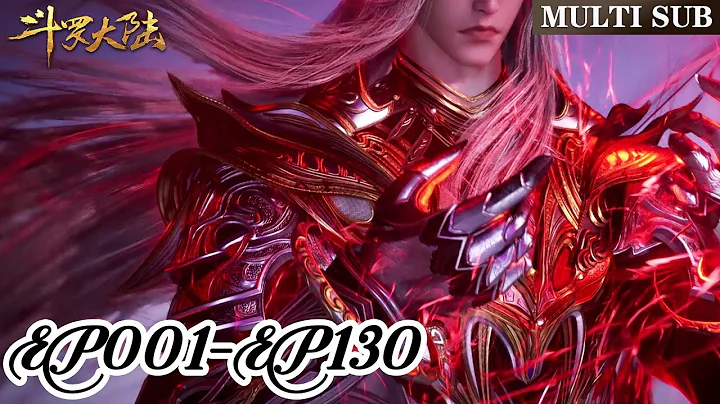Dragon's feet
The dragon's energy is also divided. Looking at the dragon's feet, you can see the nobility, beauty and evil of the dragon.
Where the legs of the rear dragon section fall, the stars rise up and form an image, and it is auspicious to protect the dragon body. Acupoints are not valuable for seeing, but valuable for not seeing them.
If there are sharp and sharp blades, weakened, steep rocks, carbuncle, too heavy drag, irregular size, straight and hard like a spear, thin and winding like a rope, heavy arms and severed heads, cigarette packs, throwing pens, etc., then the dragon is not suitable. Lower hole.
Dragon's feet are a manifestation of energy distribution carried on the dragon's body.
Therefore, inspecting the dragon's feet can also help distinguish the dragon's mental appearance.
Generally speaking, the dragon's legs should not be too bloated or too long, as this will drag away the dragon's energy, and they should not bring murderous aura, as this will easily injure the dragon.
As for the things carried by the dragon's feet, it is best not to be visible in the hole.
Dragon Branch
Dragon Branch: The legs are short, shallow and even.
Wutong branches: The dragon branches are even, facing each other, facing each other, flat and facing each other, with branches going through the heart, like the shape of a king.
Peony branch: The length of the dragon branch is wrong, the left and right sides are similar to each other, and the two sides are evenly round.
Qi Zi Zhi: There is no interaction between the nodes, there is one on the left and none on the right, there is something on the right and none on the left, it is like a mysterious herringbone.
Jianjiazhi: There is something on the left and nothing on the right, and the front and back are evenly facing each other.
Willow branches: Some of them grow on one side, and they should be sent with them.
Jade Silk Branch: The dragon body moves, without branches and feet, like a dragon coming out of its cave, a fairy belt floating in the air, a jade shuttle being thrown, silk flying in the sky, etc. It must be entangled with dragons and tigers, and the cave is warm and dense.
Rolling Shutter Palace Examination: The branches are skewed, and the young ancestor is wrapping the branches.
Full partial branch: one side has branches and the other side has no branches.
Centipede Festival: The dragon branches are shortened, facing each other and piercing the heart. Both sides should be protected.
One side is beautiful and the other side is evil: The dragon branch is beautiful on one side and evil on the other, so it is not suitable to go down.
Crab-legged branches: Dragon's thick branches.
Reed whip bamboo branches: thick veins, slightly exposed joints, no branches.
Beaded branch: thin veins, rounded nodes, no branches.
Dragon branches are a manifestation of the process of dragon veins opening branches and spreading leaves.
The characteristic of dragon-jointed branches is that the dragon veins are thick but the branches are short, and the branches are symmetrical and even from left to right.
The characteristics of Wutong branches are luxuriant branches, symmetrical branches on the left and right, the size of the branches are always basically symmetrical, and the veins emerge from the middle and run straight through the heart.
The characteristic of peony branches is that the dragon branches are staggered one on the left and the other on the right. The legs of the dragon branches gradually become smaller from large to large, and the veins generally go out from the middle.
The characteristic of catalpa branches is that the branches are the same as peony branches, but the veins in the middle swing left and right, and the lines are like a zigzag, which is derived from the common characteristic of wolfberry and catalpa "soft curve".
Jianjia branches refer to newly grown reeds, so the characteristic of Jianjia branches is that the branches sometimes float to the left and sometimes to the right, and the branches are thin, soft and floating.
The characteristic of willow branches is that one side has branches and the other has no branches. The side without branches must be protected by an outer mountain to form holes.
The jade silk branches have no branches and legs, and the dragon veins curve like streamers.
The characteristic of the rolling curtain palace examination is that there are many branches on one side (like the buildings lined up one by one in the examination room), and there is a long mountain range (long branches like hanging curtains) wrapping it on the other side.
Full partial branching means that one side has branches and legs, and the other side is completely tilted and has no branches and legs, and generally no holes are formed.
The characteristic of the centipede joint is that the dragon's branches are short and slightly short, but the two sides are facing each other. The centipede joint needs to be protected by high mountains on both sides to form a hole.
The side-evil side-branch refers to a pulse that is both evil and normal at the same time. This kind of pulse does not form acupoints.
Crab leg branches are characterized by thick and thin branches.
The reed whip bamboo branch has no branches and feet, but the dragon veins are thick and knotted, which are usually Jupiter nodules.
The beaded branches have no branches, thin veins and many protrusions.
Although each type of dragon branch has many variants, in general it is consistent with the above classification characteristics.
No matter how "beautifully named", no matter how vividly and appropriately described, it is just for the convenience of our memory. The key point is that dragon branches should always be symmetrical, coordinated, thick, and densely branched, and biased, thin, and dense. Sharpening is poor.

Dragon branch example picture

Indus branch example picture

Peony branch example picture

Qijia branch example picture

Jianjia branch example picture

Shuliandian test branch example picture

Crab leg branch example picture

Reed whip bamboo branch example picture

Willow Branch example picture

Full partial branch example picture
![The Degenerate-Drawing Jianghu S5 & S6 Full Version [MULTI SUB] - DayDayNews](https://i.ytimg.com/vi/7kegXj0SvdI/hq720.jpg?sqp=-oaymwEcCNAFEJQDSFXyq4qpAw4IARUAAIhCGAFwAcABBg==&rs=AOn4CLAzyjxvhu1NSP3s7bjXrcjO0L_3mg)
![The Degenerate-Drawing Jianghu S5 & S6 Full Version [MULTI SUB] - DayDayNews](https://cdn-dd.daydaynews.cc/img/play.svg)


![✨Soul Land EP 01 - 130 Full Version [MULTI SUB] - DayDayNews](https://i.ytimg.com/vi/AtXBtbvNq2c/hq720.jpg?sqp=-oaymwEcCNAFEJQDSFXyq4qpAw4IARUAAIhCGAFwAcABBg==&rs=AOn4CLBOIp4OllfYh1yxt0effNrUko92Lg)
![✨Tales of Demons and Gods EP 01 - EP 123 Full Version [MULTI SUB] - DayDayNews](https://i.ytimg.com/vi/GsjaaYb8-PA/hq720.jpg?sqp=-oaymwEcCNAFEJQDSFXyq4qpAw4IARUAAIhCGAFwAcABBg==&rs=AOn4CLC7CWXf9KmbWVf1h_85eEEHGDLWRA)


![✨A Will Eternal EP 01 - 106 Full Version [MULTI SUB] - DayDayNews](https://i.ytimg.com/vi/PkAfGiXQK_U/hq720.jpg?sqp=-oaymwEcCNAFEJQDSFXyq4qpAw4IARUAAIhCGAFwAcABBg==&rs=AOn4CLBTtc2yQP7WY40Q41f_lIF2Yj_WKA)





![[교양] 천일야사 97회_181029_명쾌한 사이다 판결의 주인공 판관 포청천, 그가 돌아왔다! 외 - DayDayNews](https://i.ytimg.com/vi/_Nv92NwqqoI/hq720.jpg?sqp=-oaymwEcCNAFEJQDSFXyq4qpAw4IARUAAIhCGAFwAcABBg==&rs=AOn4CLCXXc5nXDlay6TAkB2iiqcxzXnPfA)






